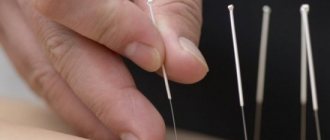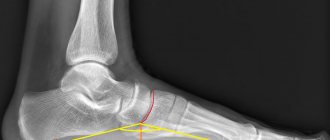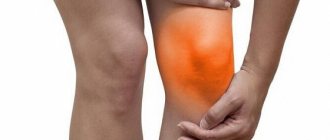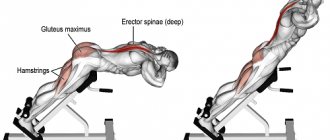Vertebrogenic cervicalgia, what is it?
Diseases of the cervical spine, accompanied by aching pain, are collectively called cervicalgia. Quite often, cervicalgia manifests itself with poor posture, limited mobility, refusal to play sports, excess body weight, difficult working conditions, metabolic disorders in the body and can be accompanied by the following symptoms:
- pain in the neck when turning or tilting the head;
- sleep disturbance;
- noise in the head;
- contraction of the occipital muscles;
- dizziness;
- tension in the neck and back of the head.
Spinal disease can be acute or chronic.
Read also
Lumbar spondylosis
Are you bothered by dull and aching pain in the lower back?
Has it become difficult to endure long trips behind the wheel, to stand waiting for your turn, as your lower back “seems to be filled with lead”? According to statistics, one… Read more
Humeroscapular periarthritis
Humeral-scapular periarthritis - (humeral-scapular periarthrosis, glenohumeral periatropathy) is the most common cause of shoulder pain. The disease is associated with pathology of the soft tissues around the joints.…
More details
Osteoarthritis of the facet joints
Osteoarthritis of the facet joints occurs due to wear and tear in older people, as a result of overload, incorrect movements or posture during exercise, and can be a consequence of a sports injury. Usually,…
More details
Schmorl's hernia
When a person undergoes magnetic resonance imaging of the spine for the first time and sees the phrase “Schmorl’s hernia” in the conclusion, he is naturally overcome by a feeling of anxiety. After all, according to the patient, the terms...
More details
Cervicobrachialgia
Cervicobrachialgia is a condition caused by compression of the nerve structures related to the spinal nerves C5, C6, C7 and C8, which mainly causes neck pain and pain in one or both upper limbs...
More details
Which doctors should I consult for cervicalgia?
Cervicalgia can be a symptom of osteochondrosis, sprains, rheumatoid arthritis, herniated disc, or cervical injuries. Depending on the cause, you should contact the following specialists:
- chiropractor;
- neurologist;
- vertebroneurologist;
- neurosurgeon;
- endocrinologist;
- neuro-ophthalmologist;
- physiotherapist;
- osteopath.
If cervicalgia is not treated, complications may occur. More often, this leads to pinched arteries, which disrupts brain function, deteriorates vision, and causes headaches.
Methods of treating the disease
Today, cervicalgia is one of the most common pathologies, occurring throughout life in almost two-thirds of the adult population of the planet. The severity of the pain syndrome ranges from mild, short-lived discomfort to intense pain, which excludes the ability to work and lead a normal life. The nature of the pain also differs: it can be a sudden, self-limiting “lumbago” or a prolonged throbbing pain that spreads to the entire neck area. The pain may radiate to the shoulder, arm, or back of the head.
Depending on the factors that caused the development of the pathology and its duration, vertebrogenic (developing as a result of osteochondrosis) and non-vertebrogenic, acute (lasting less than 10 days) and chronic forms of the disease are distinguished. Since the cervical spine contains a large number of important vessels and nerves, disorders localized in this area cause intense pain and dysfunction of many organs. For this reason, neck pain, accompanied by other painful symptoms, is an absolute reason to immediately consult a doctor.
Drug therapy
Depending on the cause of cervicalgia, the following types of drugs are included in the drug treatment regimen:
- non-steroidal anti-inflammatory drugs (NSAIDs);
- painkillers (anesthetics) - prescribed for unbearable pain in the form of injection blockade of the affected area;
- muscle relaxants - it is noted that relaxing the neck muscles helps relieve pain;
- antibiotic therapy - antibiotics are prescribed to eliminate a purulent inflammatory process of bacterial origin;
- vitamin-mineral complexes, B vitamins.
Physiotherapy
To reduce the severity of pain, the patient is prescribed the following types of physiotherapeutic procedures:
- electrophoresis with painkillers;
- magnetic therapy;
- acupuncture;
- mud baths;
- warming compresses;
- massotherapy;
- manual therapy;
- taping;
- wearing a Shants collar.
Surgery
The question of the need for surgical intervention is considered in the case of cervicalgia caused by severe pathologies of the spine. In order to eliminate excessive compression of the nerve roots, discectomy, laminectomy or foraminotomy is indicated. If intervertebral hernias or neoplasms of various types localized in the neck area are detected, they are surgically removed. For degenerative changes in the spinal column, spinal fusion is indicated - an operation during which the vertebrae are fixed. For neck pain caused by the development of ulcers, the latter are opened, after which the formed cavity is washed with a solution of antibacterial agents.
Clinic "Aspect of Health" for the treatment of cervicalgia in Ufa
If you notice symptoms of the disease, do not ignore them! Our clinic specializes in the treatment of spinal diseases. The basic principle of the institution is treatment without the use of drugs and surgeries.
At the Aspect of Health clinic, we use not only basic healing methods, but also our own unique developments. Their effectiveness is confirmed by numerous reviews and recommendations from our grateful patients. You can find it on our website.
Treatment is prescribed after a complete qualified examination and an accurate diagnosis. We provide a wide range of medical services aimed at comprehensive treatment. Doctors at the clinic carry out:
- qualified inspection;
- diagnostics;
- detailed consultation on survey results;
- manual therapy;
- physiotherapy;
- modern rehabilitation measures.
Advantages of treatment in Israel
- High level of qualifications and experience of doctors, many of whom are world famous.
- Availability of modern diagnostic and treatment equipment.
- Carrying out treatment according to a regimen individually drawn up for each patient.
- Use of latest generation drugs.
- Loyal prices.
Despite the prevalence of cervicalgia, this pathology should not be treated without attention, since it can be a symptom of a serious disorder. Do not hesitate, contact the clinic of your choice and return to a healthy life after undergoing adequate treatment.
- 5
- 4
- 3
- 2
- 1
(1 vote, average: 5 out of 5)
Diagnosis and treatment of vertebrogenic cervicalgia
Before starting treatment, you need to identify the cause of the pain symptoms. The Aspect Health clinic will conduct a comprehensive examination. First, the pain will be relieved, and then treatment will be prescribed as the pain decreases.
- A survey about symptoms that bother you and the nature of the disease.
- Visual inspection of the painful area, checking sensitivity and reflexes.
- Prescribing examinations (CT, MRI of the cervical spine, radiography, general clinical tests).
- Recommendations for pain relief.
- Determining the diagnosis and treatment methods based on the results of examinations, issuing referrals to specialized specialists, if necessary.
- Prescription of rehabilitation procedures after treatment and exercise therapy.
The intervention of a surgeon will be required only in the case of a severe or advanced patient’s condition, when it turns out that other methods do not give positive results.
Methods for diagnosing the disease
The examination necessary to make a diagnosis is carried out in Israeli clinics, on average, within three days.
- The first day
- Second day
- Day three
On the day of admission to the clinic, the patient visits the attending physician.
At the initial consultation, the neurologist questions the patient in detail about the nature of his complaints, duration and intensity of pain, medications taken, and concomitant diseases. After a thorough superficial examination, the patient is prescribed the necessary examinations. Carrying out examinations prescribed by the attending physician:
- imaging research methods (x-ray, CT, MRI) - X-rays show deformations of the cervical spine, displacement of individual vertebrae, computed tomography is a more reliable method demonstrating the degree of disorders, magnetic resonance imaging allows you to assess the condition of the ligaments;
- ultrasound examination (ultrasound) of the neck area and nearby organs;
- electromyography;
- electroneurography;
- detailed and biochemical blood tests;
- microscopic examination of a smear obtained from the throat.
The finished results are submitted for consideration to a medical commission consisting of the attending physician and highly specialized specialists. After studying the data obtained, doctors make a diagnosis and develop a treatment regimen.
Symptoms (signs) of cervicalgia
The main symptom of cervicalgia, which becomes a reason to consult a doctor, is pain in the cervical region. It has a tingling, shooting, pulsating character. The symptom of cervicalgia in women and men worsens suddenly, which is due to increased physical activity on this section.
Acute pain syndrome can cause improper formation of the neck bend: the head is forced to turn to one side. This condition is called “torticollis”.
The painful sign of cervicalgia radiates to the occipital region, scapular region, shoulder area and upper limb. The pain is caused by muscle tension. In this case, the muscles become hard, which can be detected by palpation. Associated symptoms include dizziness, ringing and noise in the ears.
Cervicalgia in children occurs with the same symptoms as cervicalgia in men and women, but more often occurs against the background of the development of scoliosis.
The diagnosis of cervicalgia can be confirmed based on the diagnostic results. For this purpose, X-rays, CT, MRI, and myelography are prescribed.
Prevention of cervicalgia
Prevention of the disease “cervicalgia” first of all lies in caring for the health of the spine. Experts recommend following the following rules:
- if you have to be in a sitting position most of the day, you need to take breaks from time to time, walk a little, do a warm-up for your arms and legs, and back;
- It is recommended to sleep on a hard orthopedic mattress and the same type of pillow;
- lift weights slowly, without jerking;
- Proper nutrition is the key to the health of all organs and systems.
To prevent cervicalgia, it is recommended to systematically perform physical exercises. This could be morning exercises or a weekly visit to the gym.
Cervicalgia does not occur on its own. In any case, there is a reason for this, which must be diagnosed in time, which will allow timely initiation of appropriate treatment for cervicalgia and reduce the risk of developing negative consequences.
What is the cause and source of CDH
Painful sensations can occur due to pathology:
- cervical muscle corset, especially its upper sections;
- degenerative-inflammatory nature, affecting the joints and articulations of the cervical (cervical) segment of the spine, especially with problems in the II – III cervical vertebrae;
- trunks of the internal carotid and vertebral arteries. The occurrence of thrombosis, the appearance of areas of pronounced narrowing of the arteries (stenoses), interfere with normal blood flow, causing pain;
- meninges, especially the dura mater, which originates in the upper levels of the spinal cord.
How to treat cervicalgia
How to treat cervicalgia is determined taking into account the cause that caused its appearance. First of all, etiotropic treatment is prescribed, aimed at eliminating the source of the pathology.
To reduce the severity of pain symptoms, non-steroidal anti-inflammatory drugs are used. Such treatment of cervicalgia is prescribed for a short period of time, as they cause complications from the gastrointestinal tract. To minimize the risk of consequences, a drug from the group of proton pump inhibitors, which protect the mucous membranes of the gastrointestinal tract, is taken in combination.
If there is spasm of the paravertebral muscles, muscle relaxant drugs that relax the muscle fibers are used in the treatment of cervicalgia. If they are ineffective, local anesthetics are injected. If conventional painkillers do not help eliminate the pain, hormonal drugs are prescribed.
After the acute stage of the pathology has been stopped, it is allowed to begin physiotherapeutic treatment of cervicalgia: massage, electrophoresis, physical therapy, magnetic therapy, etc.
How to cure cervicalgia if it cannot be corrected by conservative methods? In this case, the only correct decision is an operation, the indications for which are:
- spinal cord damage;
- central paresis;
- impaired sensitivity and functioning of the pelvic organs.
Among the surgical methods for treating cervicalgia that are used in such cases are distectomy, foraminotomy, and laminectomy.
Complaints and clinical picture of CDH
The features of CDH make it possible to distinguish it from manifestations of other primary pain processes in the head.
Cervical headaches are characterized by:
- unilateral manifestations at the onset of occurrence. This feature makes it possible to distinguish central headache from migraine pain, which begins on one side and often moves to the other. Cervical pain throughout the initial period of the disease is localized only on one side. Then, “wandering” pain is possible, but still, the main focus will be at the site of primary occurrence;
- the intensity of CDH is always slightly lower than with migraines and cluster pain. Cervical pain is not painful and does not immobilize the patient. Most often, the patient experiences dull pain with rare pulsating and sharp excesses. An attack of central headache is longer in comparison with a migraine attack. Chronicization of the process occurs very quickly and in almost all cases;
- Problems in the neck provoke a painful attack - numbness (ossification) from the patient being in an uncomfortable position for a long time, unsuccessful movement, neck bruise. An attack of headache may be accompanied by pain in the neck, shoulder, arm on the side of the lesion;
- Not typical for CDH - fear of light (noise), nausea. But dizziness is common during an attack.
Treatment of cervicogenic headaches
An attack of central hypertension is eliminated:
- puncture, anesthetic blockade of the greater occipital nerve;
- additional intake of NSAIDs – non-steroidal anti-inflammatory drugs;
- in some cases, the use of botulinum toxin;
- for severe pain - injection of steroid hormones under the membranes of the spinal cord;
- electroanalgesia;
- acupuncture.
To alleviate and prevent attacks of cervical headaches, factors that injure the neck should be eliminated. Physical therapy combined with massage provides a good therapeutic effect. When treating cervical headaches, psychotherapy is mandatory, and hypnosis is especially effective.
The text was checked by expert doctors: Head of the socio-psychological service of the Alkoklinik MC, psychologist Yu.P. Baranova, L.A. Serova, a psychiatrist-narcologist.
CAN'T FIND THE ANSWER?
Consult a specialist
Or call: +7 (495) 798-30-80
Call! We work around the clock!
Cause of cervicalgia
Taking into account the characteristics of etiological factors, 2 forms of the disease are distinguished: vertebrogenic and non-vertebrogenic. The causes of vertebrogenic cervicalgia are as follows:
- intervertebral disc herniation;
- rheumatoid arthritis;
- spondylosis, spondylitis;
- the presence of a tumor-like neoplasm in the cervical region;
- history of neck injury;
- osteoporosis.
The causes of non-vertebrogenic cervicalgia are as follows:
- sprained ligaments or muscles;
- myositis;
- fibromyalgia;
- myofascial pain syndrome;
- neuralgia of the occipital nerve.
In some cases, nonvertebrogenic cervicalgia occurs against the background of meningitis, an abscess in the epidural zone, hemorrhage in the subarachnoid space, or thrombosis.
Predisposing factors to what causes cervicalgia include prolonged stay in one position, the head occupying an uncomfortable position during sleep, the development of an infectious disease in the cervical spine, a sedentary lifestyle, and hypothermia.









